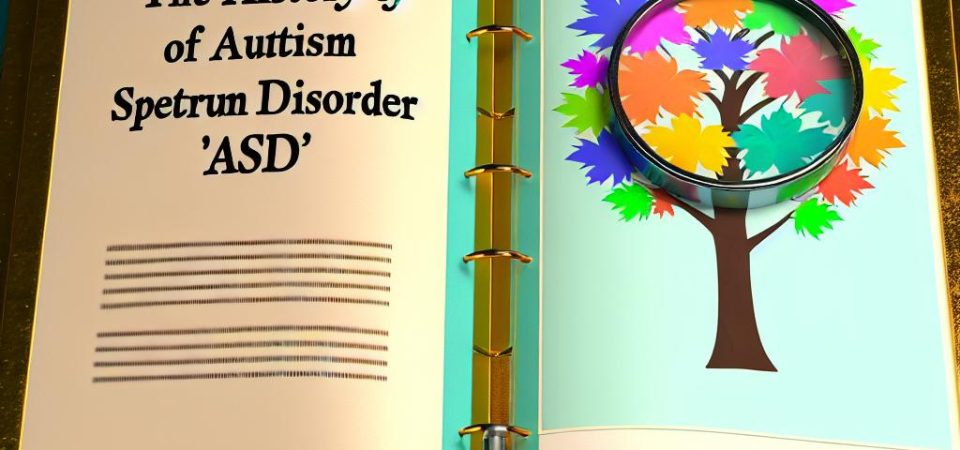Introduction
The understanding of Autism Spectrum Disorder (ASD) has evolved significantly over the years. Autism, a complex neurodevelopmental disorder, first garnered attention in the early 20th century. The trajectory of ASD’s history outlines the gradual recognition and understanding of its manifestations and the progression in diagnostic criteria.
Early Observations
The initial observations of behaviors now recognized as autistic date back centuries, but more formal documentation began in the early 1900s. In 1908, the British psychiatrist Eugen Bleuler coined the term autism in a different context, relating it to a withdrawal from reality, mostly in schizophrenic patients. At this point, autism was not identified as a separate condition but rather as a symptom of schizophrenia. This early misinterpretation set the stage for future research and consideration of autism as its own entity.
Leo Kanner’s Contributions
A significant development occurred in 1943 when Leo Kanner, an American psychiatrist, published a landmark paper describing 11 cases of children exhibiting similar characteristics. Kanner noted these children displayed a profound inability to relate to others, an unwavering insistence on sameness, and a remarkable memory. These characteristics laid the foundation for the modern understanding of autism. Kanner’s work highlighted the unique set of behaviors and developmental patterns that distinguished autism from other conditions of the mind, suggesting inherent neurodevelopmental origins.
Hans Asperger’s Studies
Around the same time in 1944, Hans Asperger, an Austrian pediatrician, studied a group of children with distinct social and communication differences but often had average or above-average intelligence. Asperger’s work remained relatively unknown in the English-speaking world until the 1980s, when it was popularized by British researcher Lorna Wing. The term Asperger’s Syndrome entered the diagnostic lexicon as a result of their combined efforts. This marked a crucial step in recognizing the wide presentation of autism symptoms and the notion of a spectrum, with Asperger’s representing individuals who could excel in academic or specialized areas despite social challenges.
Evolution of Diagnostic Criteria
Initially, autism was often misdiagnosed or viewed as a form of childhood schizophrenia. With continued research, the distinct identity of autism became clearer. In 1980, the third edition of the Diagnostic and Statistical Manual of Mental Disorders (DSM-III) included Infantile Autism as a separate category for the first time. This inclusion was a monumental shift in understanding autism as a standalone disorder, emphasizing developmental differences manifesting early in childhood.
The definition and criteria have since evolved through subsequent revisions. In 1994, the DSM-IV introduced a broader category: Pervasive Developmental Disorders, which included Autism, Asperger’s Syndrome, and others. This provided a more nuanced understanding of developmental disorders and acknowledged the diversity of symptoms and severities that could occur. The most recent update, DSM-5, published in 2013, consolidated these under the umbrella of Autism Spectrum Disorder (ASD). This consolidation reflected a modern understanding of autism as a broad spectrum, recognizing the varied experiences of individuals diagnosed with ASD.
Diagnostic Challenges and Revisions
The evolution of diagnostic criteria also brought challenges, such as accurately identifying and differentiating autism from other neurodevelopmental disorders. Throughout the decades, debates have ensued about the inclusion or exclusion of specific traits, such as those associated with Asperger’s Syndrome. The move to consolidate disorders into ASD aimed to improve diagnostic consistency and reduce ambiguity. However, it also raised concerns among some individuals previously diagnosed with separate conditions about the potential for losing identity tied to specific diagnoses.
Recent Developments
In recent years, our understanding of ASD has further expanded, influenced by advancements in genetics, neuroscience, and broader acceptance of neurodiversity. Today, ASD is identified as a spectrum, recognizing the wide variability in its manifestations. This reflects a shift from focusing solely on deficits to understanding autism as a complex interplay of differences. Recent approaches advocate appreciating neurodiversity and the idea that neurological differences are to be understood and accepted, rather than rectified.
Research continues to explore the environmental and genetic factors contributing to ASD, striving to better understand its origins and improve interventions. Studies suggesting the genetic underpinnings of autism indicate there is no single cause but rather a combination of genetic mutations and environmental triggers. Interventions have become more personalized, taking into account the unique strengths and challenges of each individual.
For detailed information on ASD research, the latest studies can be found at [Autism Speaks](https://www.autismspeaks.org).
Impact of Technology and Societal Changes
Furthermore, technological advancements have allowed for the use of sophisticated imaging techniques and genetic testing tools that provide deeper insights into the autistic brain’s function and structure. Society’s perception of ASD has also undergone significant changes, with increased advocacy for inclusion, accessibility, and support programs tailored to the needs of those on the autism spectrum.
Conclusion
The history of Autism Spectrum Disorder is marked by progress from misunderstanding, to defining specific criteria, to embracing the diversity within the autism spectrum. Continued research and increased awareness are pivotal in advancing both the scientific understanding and the social integration of individuals with ASD. While significant strides have been made, ongoing efforts are necessary to ensure holistic support and opportunities for those with ASD to thrive in all aspects of life. The future of ASD research aims not only to unveil the mysteries of its etiology but also to foster a more inclusive society that values neurodiversity.
